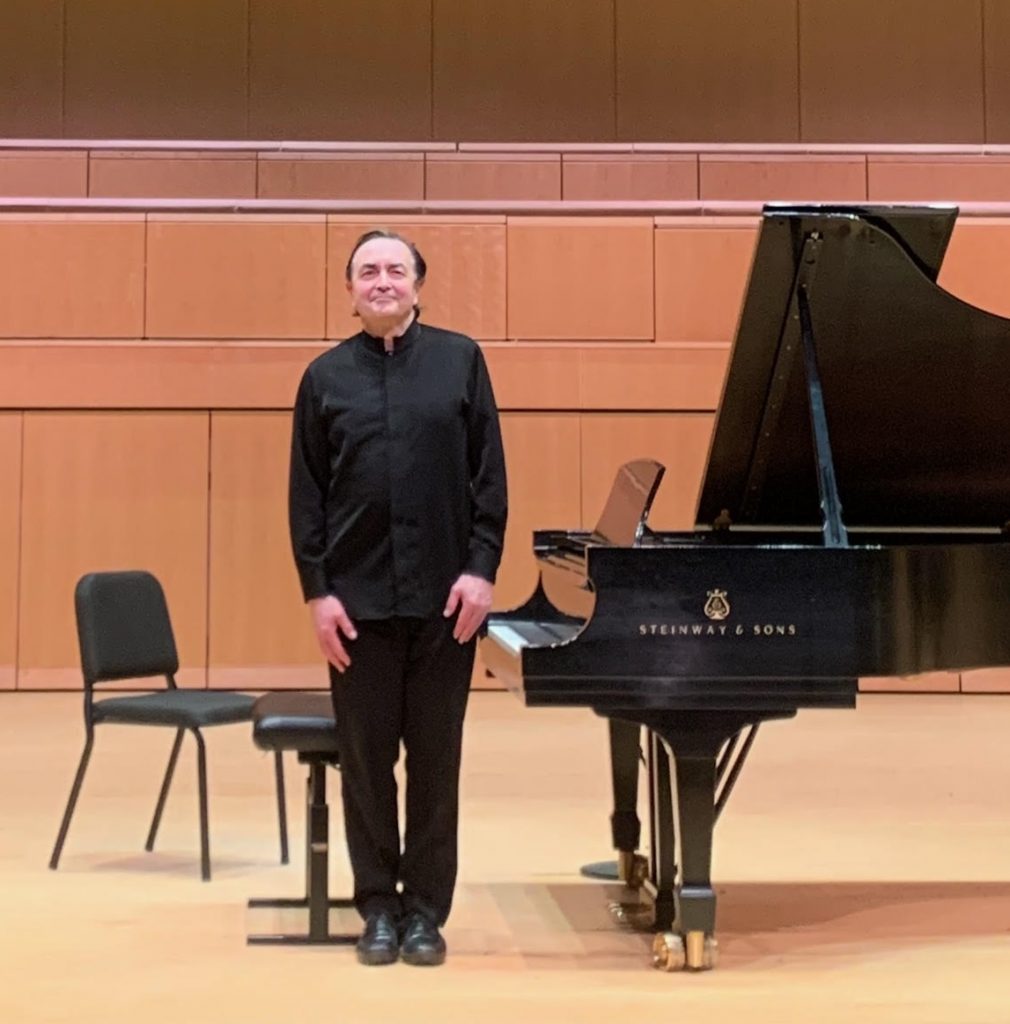Aimard deconstructs the fantasia in brilliant Candlelight recital

Pianist Pierre-Laurent Aimard performed at Linehan Concert Hall Sunday afternoon. (Photo: Candlelight Concert Society)
Pierre-Laurent Aimard always curates his recitals with scholarly devotion. The French pianist, last in the area in 2018, did it again with a fascinating program focused on the fantasia, presented Sunday afternoon by Candlelight Concert Society at Linehan Concert Hall, on the campus of the University of Maryland, Baltimore County. (CCS board president Bryan Young publicly acknowledged the help of Senator Ben Cardin for the successful processing of Aimard’s U.S. visa.)
The name “fantasia” implies, as Aimard put it in concise remarks before the second half, a “lack of form” that can liberate a composer’s imagination. Throughout the history of the genre, however, composers often mixed in contrapuntal elements with sections of improvised freedom. Aimard acknowledged that his exploration of pieces bearing this title was guided by a desire to see what “the great order masters” of music history did with it.
Mozart anchored the recital, represented by four fantasias of widely differing character. The brief Fantasia No. 3 opened the concert, a series of contrasting moods. Aimard preferred not to take the slower sections too slow, adding more florid ornamentation when the main theme in D minor repeated. The little rondo-like theme in the parallel major felt cheery and light of touch, a sunny thought arising out of a morose mood.
Aimard emphasized the oddities in the much longer Fantasia in C minor, K. 475, Mozart’s most celebrated example of the genre. He patiently made his way through the unison main theme, teasing out each surprise harmonic shift and hammered accent. This irascible interpretation played like a wild rant, marked by exciting fast passages.
The Fantasia in F Minor, a fragment numbered KV.Anh 32, felt most like a solitary musing stolen from time, complete with its sudden ending, as if mid-thought. Rounding out the Mozart selections was the least disjointed selection, the Fantasia No. 2. Another composer, Maximilian Stadler, edited and possibly added to this curious adaptation of another Mozart fragment, a C minor piece that ended happily in C major.
Aimard contrasted the Mozart pieces with more extravagant free fantasias, beginning with the Fantasia in C Major, Wq 59/6, by C.P.E. Bach, which the pianist termed a “written improvisation.” Aimard’s rendition was admirably fast, even clipped, adding to the music’s unpredictable nature as Bach wheeled through daring modulations and breakaway prestissimo sections.
Aimard used the recurring motif of scurrying scales to set off the strongly contrasting sections in Beethoven’s Fantasia for Piano, op. 77. Tender love melody turned to heroic declamation, followed by a panicky fast section that threatened to go off the rails but never did.
The three greatest performances of the program came in the sort of music that is most in Aimard’s wheelhouse, grandly dense contrapuntal works of intellectual rigor. Representing the baroque tradition was Jan Sweelinck’s Fantasia Chromatica. Sweelinck likely intended the work for the organ, notating it on three staves with a separate line for the pedal. The descending chromatic motif that is the main subject opens with a series of repeated notes before slithering downward. Aimard marked all the theme’s many appearances with distinct voicings, presented by Sweelinck in both augmented and diminished forms (doubling or halving the rhythmic values) and against a bewildering array of other musical ideas.
Andrei Volkonsky combined a similar mixture of free and contrapuntal devices in his engrossing Musica stricta, which he subtitled “Fantasia ricercata.” Composed in 1956, it brings together both halves of Volkonsky’s musical influence, twelve-tone composition (then still denigrated by Soviet cultural officials) and his role as a harpsichordist and guiding light of historically informed performance techniques in Russia.
Impetuosity ruled in the Andantino movement, while a repeated-note subject received complex contrapuntal treatment in the faster second movement. Pointillistic spasms ran through the Lento rubato movement, a sparse assembly of abstract musical ideas. Abundant energy and acuity of touch rounded out the piece with a delightful toccata-like finale.
Aimard’s most recent example of the genre concluded the recital in commanding manner, George Benjamin’s Fantasy on Iambic Rhythm from 1985. The composer said that the piece “takes iambic rhythm (short-long) as its starting point,” with contrasting types of music evolving from this rhythmic cell. It is the first of Benjamin’s Three Studies for Solo Piano, which Aimard has recorded in magisterial fashion for Nimbus in 2004. (A minor page-turning delay at one point underscored the danger of playing from a score, as Aimard did throughout this concert.)
Aimard brought out this signature rhythmic pattern in both very slow tempi and extremely fast ones, where even though the ratio of short to long is similar, the effect is quite different. Aimard dissected the increasingly complex thickets of overlapping lines, laying them out like a dispassionate anatomist for our examination. At the same time, Aimard’s broad variety of touch and dynamics made even this most complicated score sound eminently musical.
Candlelight Concert Society presents Hungarian pianist Dénes Várjon 3 p.m. March 27, performing music by Bach, Mozart, Schumann, and Chopin. candlelightconcerts.org
